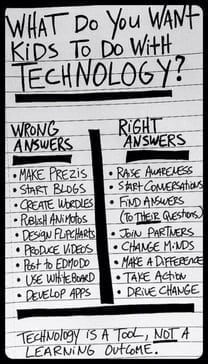3 Roles For Technology at Bennett Day School
Technology’s Role in Research
The Internet allows anyone access to endless amounts of information on any topic. It also allows people to share their first-hand experience and knowledge on any topic. Databases like Wikipedia, iTunes University and massive open online courses (MOOCs) give teachers and students access to current information, rich content, and interactive lessons on a range of material; from a simple concept like the water cycle to a more complex concept like the formation of water molecules. Interactive web content and digital books offer an enhanced reading experience that engages children in a different way from printed material. Digital comes from places all over the world, is constantly updated with current research and is often times freely available.
Technology’s Role in Creation
The evolution of computers, including touch-screen devices and various applications, allows students and teachers to capture learning as it happens and create completely original content along the way. Through project based learning, children can investigate the world around them and record their findings with pictures, videos and voice recordings. Children will be able to use dictation software to translate their spoken words into text. With access to touchscreen devices, students will be able to manipulate their digital content (media, text, drawings, etc.) to create artifacts of learning that demonstrate their applied skills and acquired knowledge.
Technology’s Role in Collaboration and Communication
In today’s world there is an ever-growing number of ways to connect and share with other people around the world. Imagine children using video conference software like Skype to chat with an environmental expert in another country about their climate and wildlife. They then take their findings and add them to their growing collection of research and documentation. They could then publish their work in an ebook format, share it with their friends and family, or even publish it to the web for other people around the world to see and learn from!
For teachers, technology tools will help us create a learning environment filled with images and digital content that children can engage with and learn from. Touch screen tablets and interactive projectors will allow teachers and students to physically manipulate and compose digital content with their hands and fingers, much like a painter’s canvas or potter’s clay. As learning manifests itself through experiences and actions of children, technology tools will allow teachers to capture the various stages of the process. This documentation will be critical in reflection and preparation for future learning experiences.
